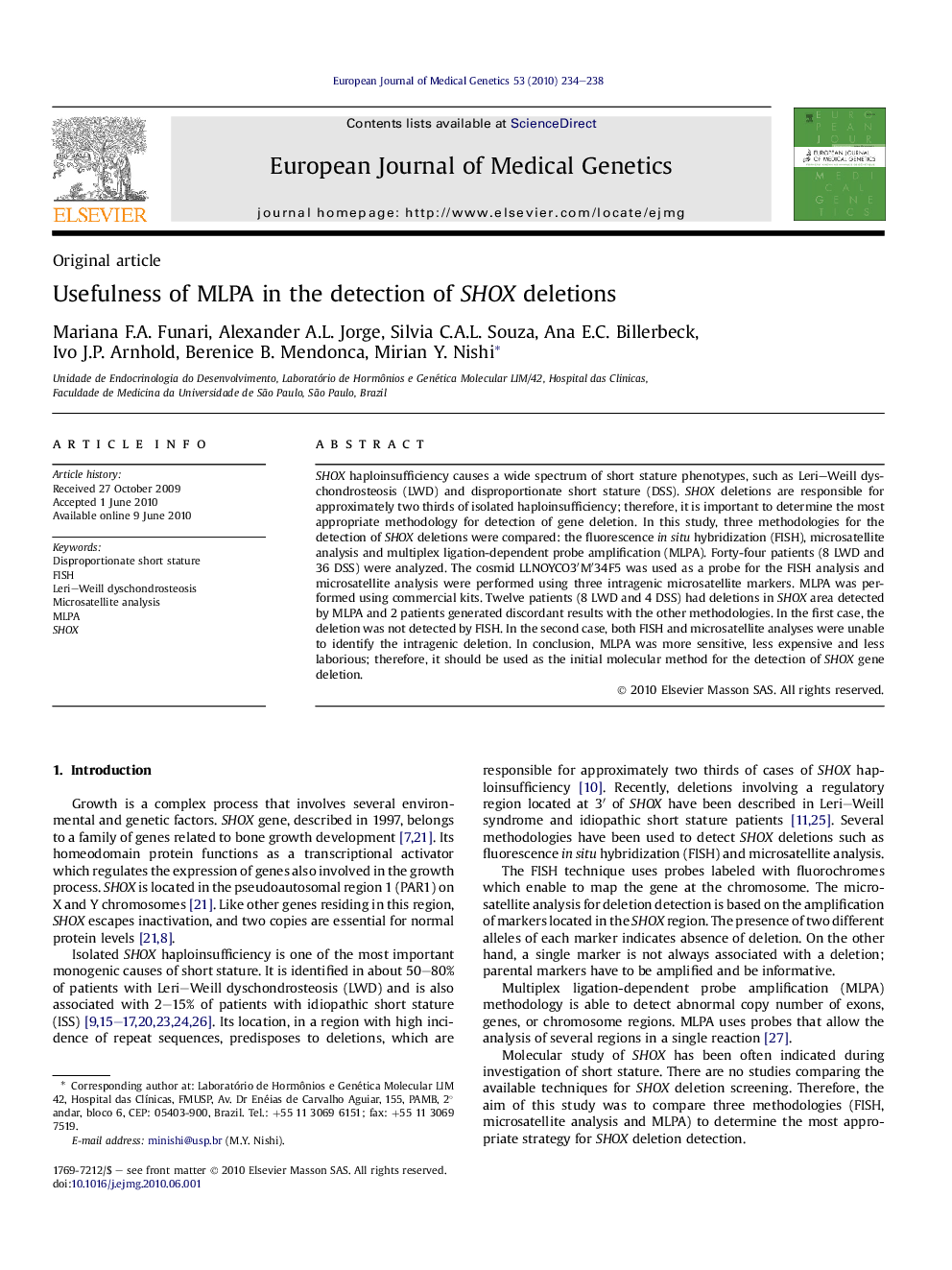| Article ID | Journal | Published Year | Pages | File Type |
|---|---|---|---|---|
| 2814029 | European Journal of Medical Genetics | 2010 | 5 Pages |
SHOX haploinsufficiency causes a wide spectrum of short stature phenotypes, such as Leri–Weill dyschondrosteosis (LWD) and disproportionate short stature (DSS). SHOX deletions are responsible for approximately two thirds of isolated haploinsufficiency; therefore, it is important to determine the most appropriate methodology for detection of gene deletion. In this study, three methodologies for the detection of SHOX deletions were compared: the fluorescence in situ hybridization (FISH), microsatellite analysis and multiplex ligation-dependent probe amplification (MLPA). Forty-four patients (8 LWD and 36 DSS) were analyzed. The cosmid LLNOYCO3′M′34F5 was used as a probe for the FISH analysis and microsatellite analysis were performed using three intragenic microsatellite markers. MLPA was performed using commercial kits. Twelve patients (8 LWD and 4 DSS) had deletions in SHOX area detected by MLPA and 2 patients generated discordant results with the other methodologies. In the first case, the deletion was not detected by FISH. In the second case, both FISH and microsatellite analyses were unable to identify the intragenic deletion. In conclusion, MLPA was more sensitive, less expensive and less laborious; therefore, it should be used as the initial molecular method for the detection of SHOX gene deletion.
